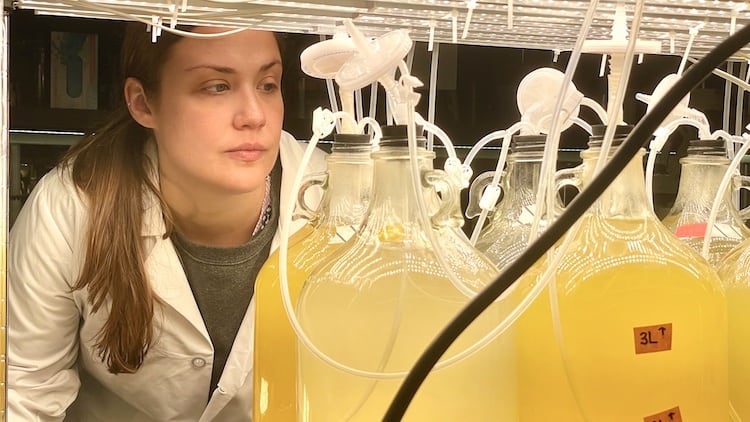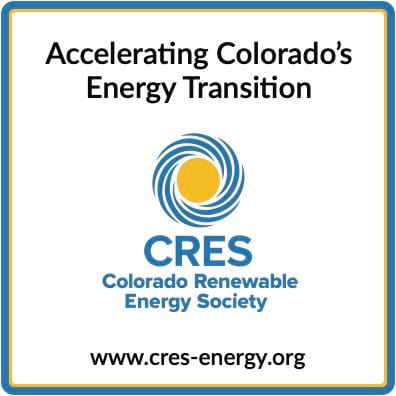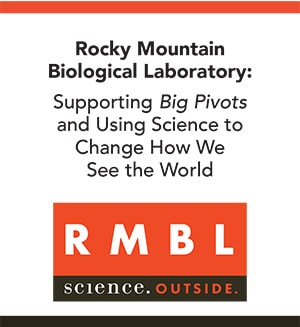4 Corners Carbon Coalition awards grants to tech companies with four projects in Colorado and one in Arizona trying to get rid of carbon emissions associated with concrete
A relatively new group of four local governments in southwestern states has awarded $389,000 to projects in Boulder, Lyons, Durango, all in Colorado, and in Flagstaff, Ariz.
They all are trying to reduce or eliminate the carbon emissions associated with concrete by sucking carbon from the atmosphere.
The 4 Corners Carbon Coalition was created in 2021 when sustainability teams from Boulder County and from Flagstaff, Ariz., discovered a common interest in carbon dioxide removal. They had introduced it as a formal component of their broader strategies. In the case of Boulder County, that was in 2018. They have more recently been joined by Santa Fe and Salt Lake City.
“The science is clear. In concert with rapid efforts to dramatically reduce greenhouse gas emissions, humanity must also pursue carbon dioxide removal (CDR) at an unprecedented pace and scale,” says the coalition on its website.
It cites the assertion in the Intergovernmental Panel on Climate Change Working Group III 2022 report of the “need for large-scale CDR as an essential pillar to limit warming to no more than 1.5°C, for which CDR also serves as a crucial tool for scenarios that limit warming to no more than 2°C by 2100.”
The IPCC report added: “This requires rapid scale-up and massive deployment of all viable CDR methods, underscoring the limited state of commercial deployment at present. … Communities at all scales across jurisdictions have crucial roles to play as innovators and host locations for CDR activities.”
To photo: Sarah Williams, the chief executive of Minus Materials, a company in Boulder, monitors growth of microalgae that produce carbon-negative, bio-renewable limestone. That process has allowed Minus Materials to produce the world’s first carbon-negative Portland cement, the company says.
CDR—it’s time to get used to another acronym—is described by the coalition as the process that pulls carbon dioxide out of the atmosphere and locks it away in geological, biologic, and synthetic formations for at least a century.
Omnipresent in industrialized nations, concrete produces emissions generally estimated to constitute 7% to 8% of global carbon-dioxide totals. In their book, “The Big Fix,” Hal Harvey and Justin Gillis say that every year the world produces more than 5 tons of concrete for every man, woman, and child on Earth.
On a per capita basin, said the journal, “Nature,” in a September 2021 editorial, that is 3 times as much as 40 years ago.
Why such high emissions? It’s the cement part of concrete, which requires using fossil fuels to heat a mixture of limestone and clay to more than 1,400 °C in a kiln. Also, when limestone (calcium carbonate) is heated with clays, roughly 600 kilograms of carbon dioxide is released for every ton of cement produced. See this explanation.
Susie Strife, director of Boulder County’s Office of Sustainability, Climate Action & Resilience, cited the synergy of local governments working together.
“Pooling resources can amplify innovation and the creative deployment of the integration of carbon removal and concrete,” she said in the announcement posted on the county’s website. “These awardees will turn their breakthroughs into real world projects right here in the Western United States. We are thrilled to provide seed funding to catalyze this work.”
Grant proposals were evaluated based on five criteria: removal; removal quality; innovation; scalability; and future impact. A workbook planned for an April release will unpack the details of the evaluation process in greater detail.
What are the projects?
Flagstaff
The largest grant, $150,000 went to a project at Block-Lite, a masonry business in Flagstaff. With Block-Lite, two California companies aim to be the world’s first to use atmospheric carbon to produce ultra-low carbon concrete.
Aircapture, a company based in Berkeley, has direct air capture technology to remove it from the air, and CarbonBuilt, based in Torrance, uses it to harden low-carbon concrete masonry blocks, resulting in 70% to 100% less embodied carbon than traditional concrete.
Boulder
Minus Materials, which received $10,000, will use algae to convert atmospheric C02 into organic biomass and bio-renewable limestone. It intends to cultivate coccolithophores, a unique type of calcifying microalgae, that will yield approximately 100 kg of bio-renewable limestone over the material use. This will then be used as a carbon-negative filler in a Portland limestone cement or limestone calcined clay concrete slab demonstration project.
Boulder
Travertine Technologies received $20,000, and it generates carbon-negative precipitated calcium carbonate using waste feedstocks from the mining and fertilizer production industries.
The project goal is to demonstrate the beneficial use of travertine’s process in the production of low-carbon-intensity cement binder for permanent carbon dioxide removal and sequestration.
Travertine, which is based in Boulder’s climate-technology sector, was founded by University of California-Berkeley Professor Laura Lammers.
Durango
Hemp lies at the center of this project, which received a grant of $119,000. A two-story office warehouse will be constructed using a “tip-up, hempcrete, structural panel system as well as through biochar used in the building’s cementitious materials.”
“We are excited to demonstrate a new method to build affordable, low-maintenance, nontoxic, fire and mold resistant buildings with carbon negative biogenic materials,” said Steve Heising, director of Citizens for Clean Energy, a Longmont-based organization.
What is carbon dioxide removal? 4 Corners defines it a dozen ways, from no-till agriculture to fertilizing selected areas of the ocean to building machines that suck carbon dioxide directly out of the air. It is not the same as carbon capture and storage.
“While CDR addresses legacy and difficult to abate emission by removing carbon dioxide from the atmosphere, carbon capture and storage is a ‘point-source‘ approach that captures carbon dioxide from industrial smokestacks, such as those on coal-fired power plants, or cement and steel factories, and then sequesters it underground.”
The money for the first grants came entirely from Flagstaff and Boulder. Leaders hope for an upcoming multiplier campaign that will expand funding. 4 Corners plans at least two more rounds of grants in the next 12 months.
- Kick the (coal) can down the road to 2040? - January 13, 2026
- Pluses and minuses for Colorado’s eastern plains - January 11, 2026
- Rural vs. urban in a panel at History Colorado - January 10, 2026






